Have you ever wondered just how strange the Australian aid community is? Do we development types think about development issues in the same way as the average Australian does, or are we outliers?
In recent years the Development Policy Centre has been studying the Australian public’s views about aid (see, e.g., here, here, and here). As part of this work, in collaboration with the Campaign for Australian Aid, we placed eight questions in the 2016 Australian Survey of Social Attitudes (AuSSA), a large, representative survey of Australian adults. As we did this, we also posed the same questions to the Australian aid community via this blog (not a random sample, but our analysis suggests no obvious biases have skewed the results).
We asked both groups about:
- whether they think Australia gives too much aid,
- why they think Australia should give aid,
- which sectors they think aid should be focused on, and
- whether they think aid is effective.
We also asked a series of questions on development more broadly, including:
- whether they think the lives of poor people in developing countries are improving,
- whether they think a wealthy person in Indonesia earns more than a poor worker in Australia, and
- the extent to which they think corruption is the cause of poverty in developing countries.
This post compares the responses of the public and Australia’s aid community for a selection of the questions we asked. Responses to all of the questions we asked, and more information about how we conducted the survey, can be found in the report.
Australian aid volume
We saw the biggest diversion between the public and the Australian aid community’s views on the question of whether Australia gives the right amount of aid or not. While the 2016 AuSSA survey findings are more or less in line with prior public opinion surveys, members of the aid community overwhelmingly (and unsurprisingly) believe that Australia does not give enough aid (Figure 1).
Figure 1: Australian aid volume
Error bars on all figures in this post indicate 95% confidence intervals. The exact wording of all questions and response choices can be found in the full report.
Areas of aid spending
We also asked respondents to indicate what they thought the three most important areas (or sectors) of aid spending are. Respondents were presented with a list of 11 common areas, and asked to indicate which they thought are the first, second, and third most important uses of aid. Figure 2 shows the weighted averages of aid spending preferences.
Figure 2: Weighted averages of aid spending preferences
While the aid community appears to have diverse preferences, the public has an affinity for more traditional aid spending areas – foremost disaster relief, and to a lesser extent agriculture, health and education. This likely reflects a traditional public perception of what constitutes ‘aid’, with a strong focus on humanitarian assistance. While the public and the aid community are similarly supportive of health, there are striking differences in education, economic development, governance, and women’s empowerment. The very low levels of public support for the latter two is particularly concerning given their importance.
Aid effectiveness
A perennial debate revolves around the question of whether aid works or not. Figure 3 shows the extent to which our respondents believe that aid helps people living in developing countries. While members of the aid community are far more likely than members of the public to believe that aid makes a big difference in the lives of the poor, it is interesting that the majority in both respondent categories take a moderate view, believing that aid improves the lives of people in developing countries, but only a bit.
Figure 3: Effectiveness of aid
While the headline findings between the public and aid community are similar, we think it’s likely that the underlying reasons for their views differ. Members of the public may be influenced by their perceptions of other brakes on development, such as the role of corruption (a topic we discuss below). By contrast, the aid community’s qualified opinion on the effectiveness of aid may be coloured by their more detailed understanding of how aid works in practice and various constraints (logistical, political, etc.) that may limit aid effectiveness. Alternatively, their perception of aid effectiveness might also be tempered by their greater appreciation of the relatively small volume of aid per capita that flows to developing countries, as compared to, e.g., income from remittances.
The role of corruption
We also asked about the relationship between corruption and poverty in developing countries. Corruption is often highlighted by aid critics, who argue that a high prevalence of corruption in developing countries means that an aid given is ineffective, and there is evidence from the UK that public attitudes there towards corruption have grown steadily more pessimistic.
Fortunately, the results of the 2016 AuSSA survey suggest that the Australian public holds a more moderate view (Figure 4). While a significant proportion of the public believe that corruption is the sole or main cause of poverty in developing countries, the plurality believe that corruption is only part of the reason why poor countries remain poor. Similarly, the majority of aid community respondents believe corruption is part of the cause of poverty, with most of the remainder thinking corruption plays a minor role.
Figure 4: Corruption and poverty
Where does this leave us?
When it comes to beliefs about aid and development, the Australian aid community and the Australian public are not polar opposites. There are common views and there are also differences which are only differences of degree. And yet, the two groups that we surveyed are not one and the same. Advocacy arguments cannot safely be assumed to be effective among the general public just because they make sense to us.
Terence Wood is a Research Fellow and Camilla Burkot a Research Officer at the Development Policy Centre. Special thanks to those Devpolicy Blog readers who filled out and shared the link to the aid community survey. Download the full report here.

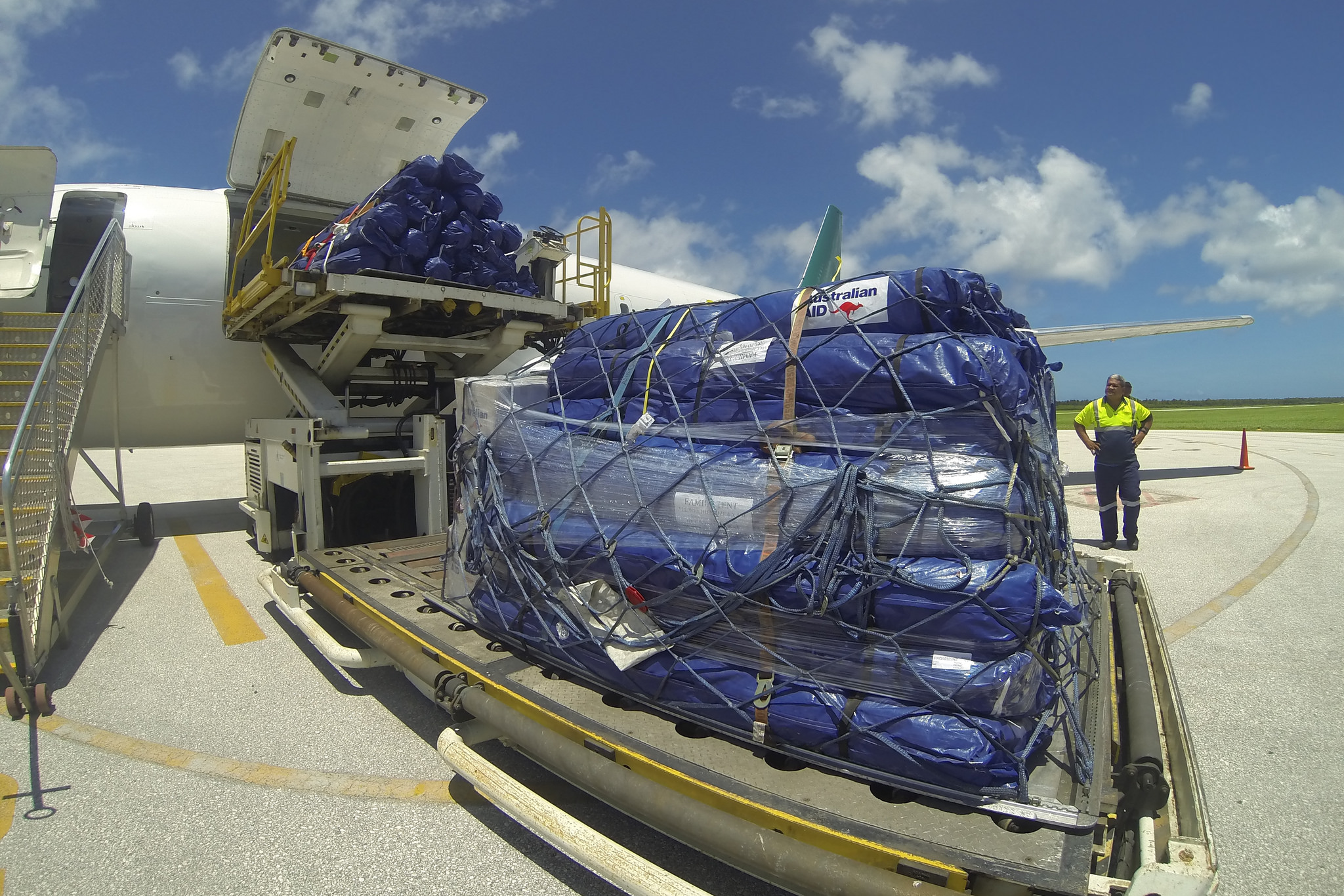
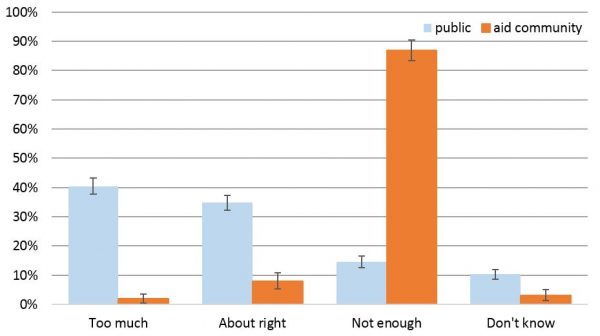
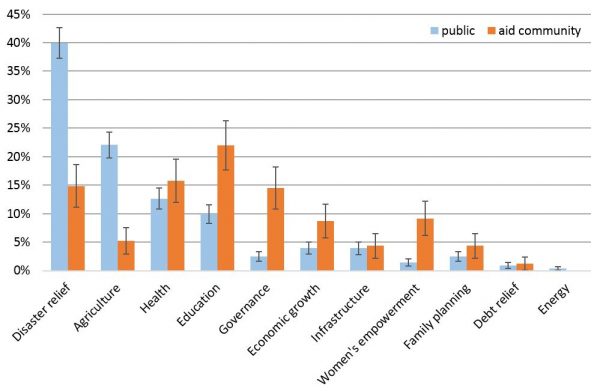

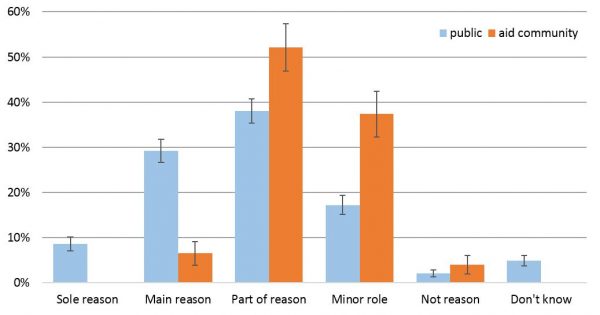
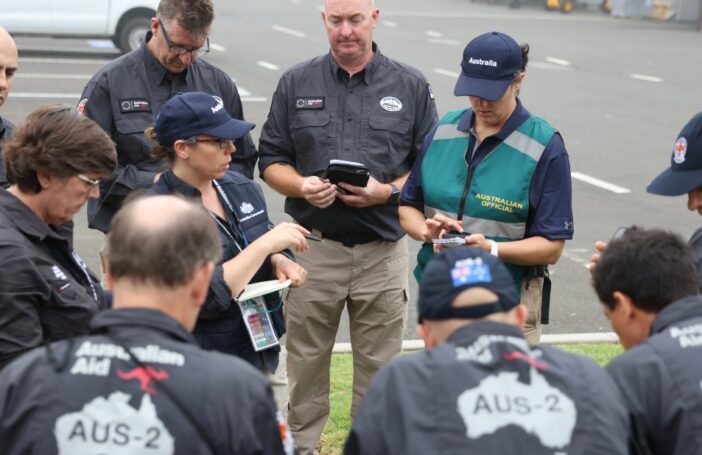
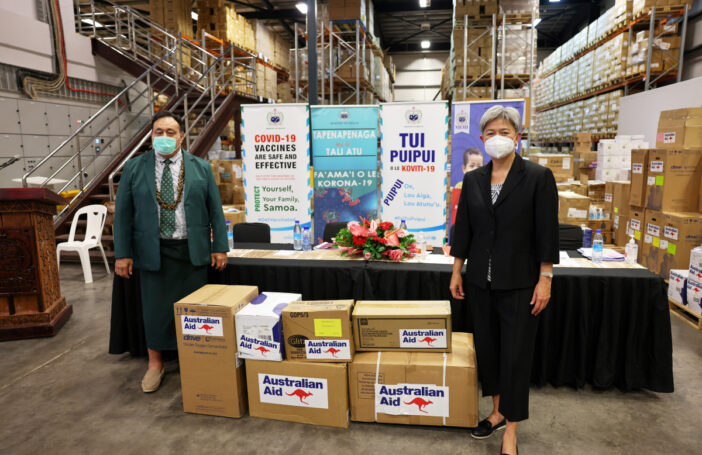
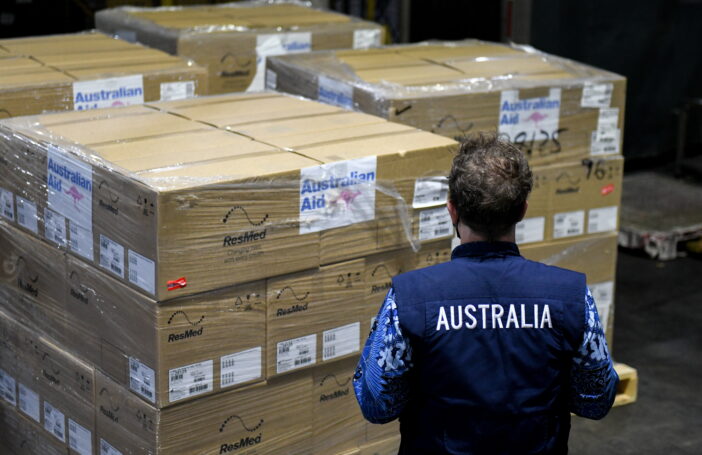

Analysis has shown (OECD, various) that governments will have foreign aid programs whether there is negative public opinion and dissent or not, as aid policy is really an elite issue. Communication on Australia’s foreign aid program should be focused on limiting dissent, educating those elites that have a voice in foreign aid policy such as members of cabinet and parliament and convincing those which are able to be convinced, the ‘charity begins at home’ crowd, of the importance of Australia’s aid program. This is perhaps an area which is quite unique in terms of public policy formulation and political communication and warrants a deeper understanding
Hi Erin,
Thanks for your comment. Sorry for my slow reply; I missed it when it was posted. I agree with your views insomuch as that I do not believe that public opinion is the sole determinant of government positions on aid.
However, there is reasonable evidence that public opinion plays some role in shaping some aspects of aid policy, alongside other factors. For this reason it shouldn’t be ignored.
By the same token, I agree with you that, public opinion it shouldn’t be a sole focus of efforts for change. I also agree there’s much more to be learnt. I’ve got a paper I want to write in which I work out a simple model of all this. Once I get time…
One point of disagreement, I don’t think there’s anything to be gained from ‘limiting dissent’. Dissent is an integral component of democracy.
Thanks again for your comment.
Terence
Thanks, very interesting comparison. I’ve got to say I’m with the public on disaster relief being the most important use of aid. It’s surely more likely that on average disaster relief will make a decisive difference than any other type of aid.
Stephen, basic service provision – health, education, sanitation – would get my vote as making the most decisive difference and I think has the most evidence in support of its impact and cost effectiveness. I might agree with you on disaster relief if a bigger part of that was preventive and the (expensive and inexpert) military was less involved.